Cats are curious creatures and often will nibble on things they should not.
Though cats are true carnivores, meaning they do not need to include plants in their diet, many kitties have a taste for greenery just the same.
If you have plants in your home or garden, it is essential to know if they are safe for your cat to eat or not. In my years as a veterinarian, I have unfortunately treated many cats for ingesting toxic plants.
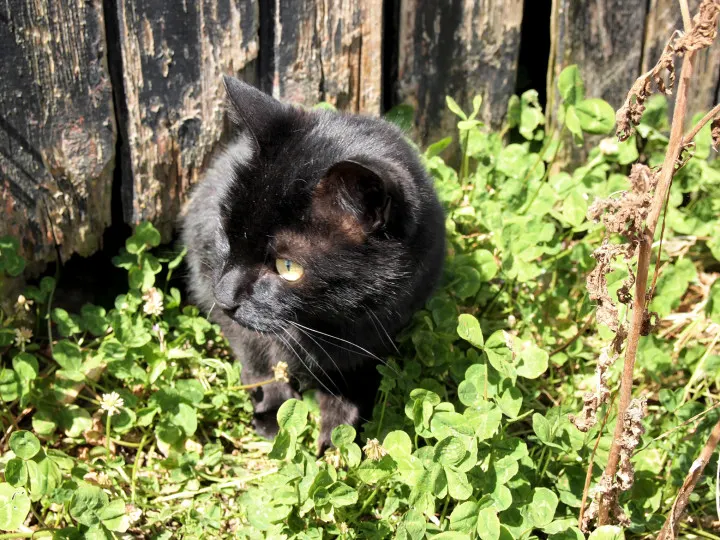
Cats should not be allowed to eat mint. There are many varieties of mint plants, and not all are toxic to cats.
Most notably, catnip and catmint are not. However, these two plants are rarely what most people think of when they think of mint.
Many mint plants contain essential oils which are toxic to cats and, therefore, should be kept out of the reach of cats.
Many mint varieties contain essential oils that are toxic to cats and if consumed, may cause many health issues for the cat.
Affected cats may vomit, have stomach pain and cramping, experience oral ulceration, and even succumb to liver failure.
Cats that are elderly or in poor health are more likely to be severely affected. The clinical signs also tend to worsen when higher quantities of the plant are eaten.
Types Of Mint
Catnip vs. Catmint
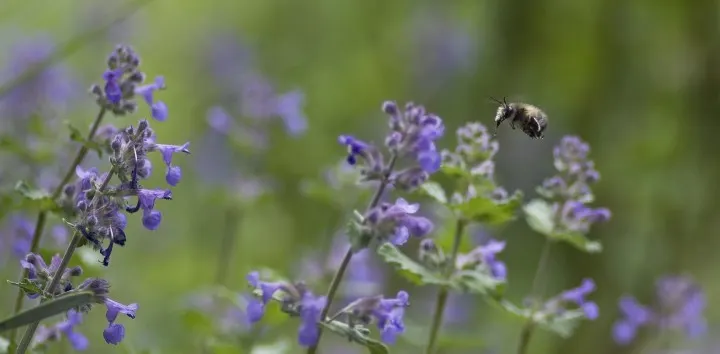 There are two varieties of mint that are safe for cats to consume.
There are two varieties of mint that are safe for cats to consume.
Some people claim that these are two different names for the same plant, but in fact, they are different varieties of mint.
Both plants are included in the mint family, and both are classified under the genus Nepeta, but there are significant differences.
Catnip is Nepeta cataria and has a weedy appearance when growing. It has flowers that are typically small and white.
Catmint is Nepeta mussinii and is used as a very attractive flowering perennial in homeowner’s and business’s flowerbeds.
The leaves are rounder and more prominent than catnip, and it has larger, lavender-colored flowers that tend to bloom for much longer than catnip.
Both plants are easy to grow, require only moderate sun and water, and attract bees and butterflies. Catnip is the only one that also attracts cats.
Catnip is attractive to cats due to a chemical compound contained in the leaves called nepetalactone. This chemical, when ingested or inhaled by a cat, stimulates the cat’s brain.
Cats on a “catnip high” will become overly playful, run, jump, and roll around. The cat’s state can be hyperactive and active, but some cats become aggressive on catnip.
There have been some reports of cats being attracted to catmint. However, the cats seemed to be more inclined to roll in the plant instead of eating it.
If a gardener desires an attractive ground cover, catmint is likely the better choice.
If a cat owner wants to grow something their cat can enjoy and does not mind the plant being consumed, catnip is the way to go.
Toxic Mint Plants
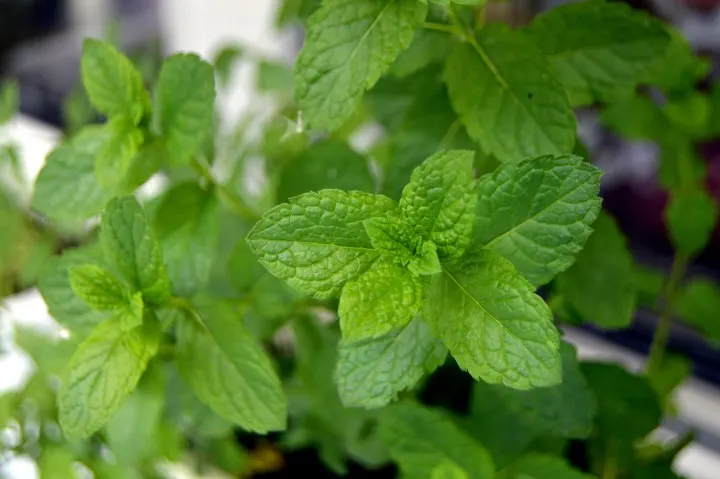 Mint plants that possess the characteristic “minty” smell and taste and are traditionally used for cooking or garnishing are toxic to cats.
Mint plants that possess the characteristic “minty” smell and taste and are traditionally used for cooking or garnishing are toxic to cats.
These mint plants contain essential oils that lead to health issues in cats.
There are many varieties of mint plants, but all are members of the Sage family. The most common type is Garden Mint. This variety is seen in herb gardens as well as in decorative gardens.
Garden Mint has oval-shaped leaves that are covered in small white hair-like projections and are wrinkled. This is a flowering plant, with lavender or white flowers growing in clusters.
Some varieties of mint grow wild in the United States and can be found almost anywhere. These uncultivated plants can grow as a groundcover or reach as high as three feet in areas of overgrowth.
Mint Toxicity In Cats
Symptoms
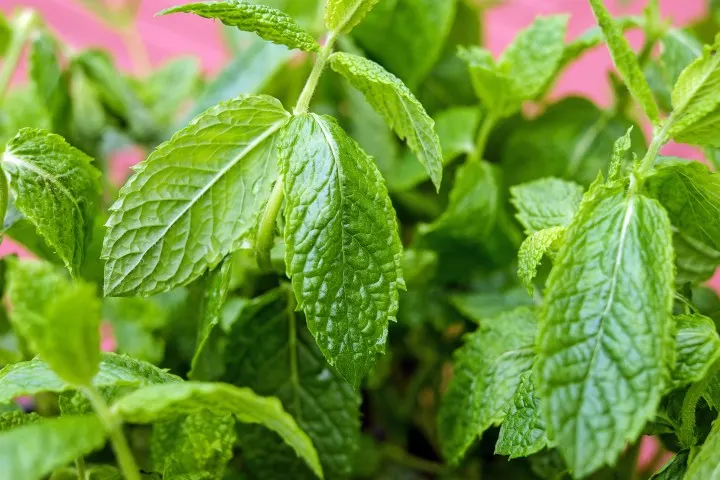 Mint toxicity, though possible, is a fairly rare toxicity in cats. Likely due to the relatively strong odor of the mint plants that are toxic, cats seem to avoid ingesting these plants.
Mint toxicity, though possible, is a fairly rare toxicity in cats. Likely due to the relatively strong odor of the mint plants that are toxic, cats seem to avoid ingesting these plants.
However, there is a possibility of toxicity if a cat does eat mint.
Toxicity to mint plants in cats is dose-dependent, which means that the more mint the cat eats, the more serious the toxicity will be.
The most common form of mint toxicity is oral irritation or ulceration.
This clinical sign is likely due to the fact that the cat chews on the leaf of the mint plant out of boredom or curiosity and then realizes it dislikes the taste. The cat often does not actually ingest any of the plants.
If the plant is ingested, the second most commonly seen issue is gastrointestinal distress. This can include vomiting, retching, stomach pain and cramping, and diarrhea.
Skin irritation can be seen in cats that have sensitive skin or cats with thin or no hair, which allows the essential oils in the mint to contact the skin.
In rare cases, liver failure can occur if large quantities of mint are ingested or if the cat is in poor health. These cats will be weak, unwilling to eat, and likely vomiting.
Signs to watch for if a cat is suspected of eating a mint plant are:
- Nausea
- Vomiting
- Diarrhea
- Weakness
- Inappetence
How Mint Toxicity Occurs
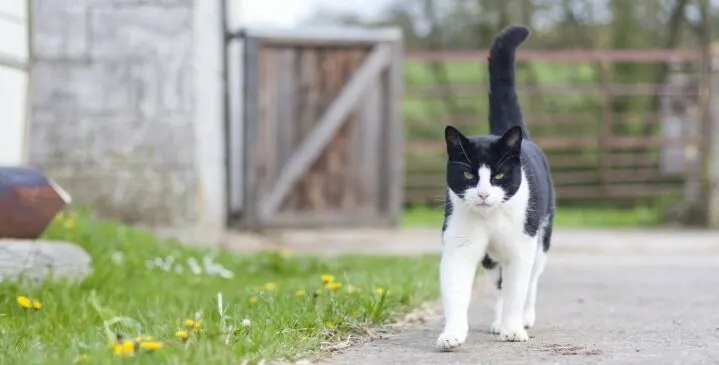 Mint may be found in many places, including herb gardens and decorative gardens. Mint is also kept in many homes for cooking, garnishing, and even medical uses.
Mint may be found in many places, including herb gardens and decorative gardens. Mint is also kept in many homes for cooking, garnishing, and even medical uses.
Wild mint can be found growing all over the continental United States.
Due to the ubiquity of mint, both indoor and outdoor cats may be able to come in contact with this plant. Most cats are repelled by the smell of mint, but some cats are not. Mint should not be fed to a cat.
Typically, mint toxicity in cats is rare as a large quantity needs to be ingested to cause a cat to become ill.
Diagnosis Of Mint Poisoning In Cats
If a cat has been exposed to mint or there is a suspicion that the cat has eaten mint, a veterinarian should be consulted right away. As is the case for any toxicity, prompt treatment is necessary.
If possible, take the plant that the cat ate or was in contact with to the veterinarian with the cat. This will greatly help the identification and aid in diagnosis and treatment.
Make sure to note if any chemicals, fertilizers, baits, or other products were used on the plant.
Often the plant is not the cause of the cat’s illness, but a chemical on the plant they ate is causing the issue. If such a chemical was used, take the container to the veterinarian with the cat.
Always keep all of the cat’s records, including their medical history and any medications or supplements that they may be taking, close at hand in case of an emergency.
Take all of this information with you to the veterinarian.
The veterinarian will perform a comprehensive physical exam on the cat, likely including routine blood work and x-rays.
These tests will help the veterinarian know how sick the cat is and what type of treatments are necessary.
Treatment Of Mint Toxicity In Cats
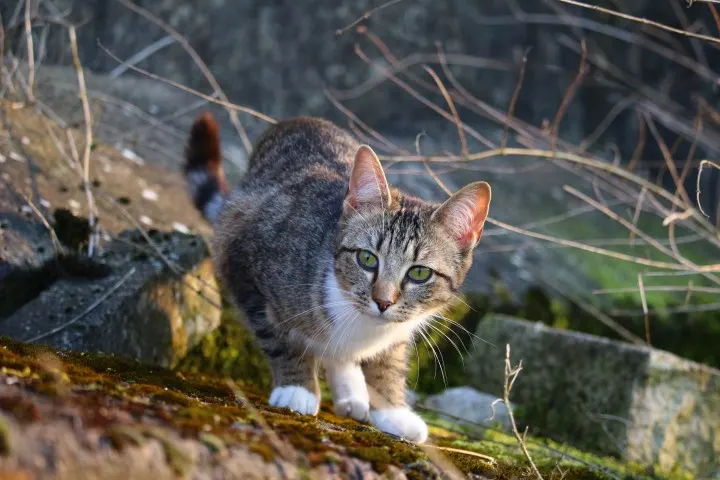 Many cases of mint ingestion in cats pass with no ill consequences. Cats rarely eat enough of the mint plant to cause severe toxicity.
Many cases of mint ingestion in cats pass with no ill consequences. Cats rarely eat enough of the mint plant to cause severe toxicity.
However, some cats will overindulge and become ill. Other cats that may become sick enough to need treatment are those that are elderly or have underlying health conditions.
Decontamination
If the mint is causing the cat to be ill, the veterinarian may try to induce vomiting to empty the stomach of its contents. This emptying will prevent more of the mint from causing issues as it is digested.
The length of time that has passed since the cat ate the mint will determine if this method of decontamination is possible, so be prepared to let the veterinarian know approximately when the cat ate the mint.
Aggressive intravenous fluid therapy will likely be administered to help flush the toxin from the cat’s body.
Areas of affected skin on the cat will be washed, and a topical soothing ointment will be applied.
Supportive Care
After the initial decontamination, the cat will need supportive care such as continued IV fluids, anti-nausea medications, and gastro-protectants.
The cat’s bloodwork will be checked repeatedly to monitor liver function.
Most cats will make a full and uneventful recovery from mint toxicity. Cats with liver damage may require long-term care and monitoring.
Final Thoughts On Cats And Mint
Because mint plants are so easily encountered and found in our homes, in our gardens, and even growing in the wild, it is essential to know what they look like in case your cat is ever seen eating one.
If mint plants are in your home or you use mint for cooking, garnishing, or medical purposes, care must be taken to keep your cat away from all forms of it to avoid toxicity.
Mint essential oils are incredibly concentrated forms of mint oil and should never be used on or around cats.
Dr. Jamie Whittenburg is a vet with 15 years of clinical experience. She graduated from Kansas State University College of Veterinary Medicine in 2006. Her area of expertise is small animal general practice, equine practice, surgery, and academia.
Dr. Whittenburg operates her own hospital in Lubbock, TX, named Kingsgate Animal Hospital. Medically, she’s most interested in practicing general surgery and feline medicine. When not at work, Dr. Whittenburg enjoys outdoor activities, reading, and spending time with her family.

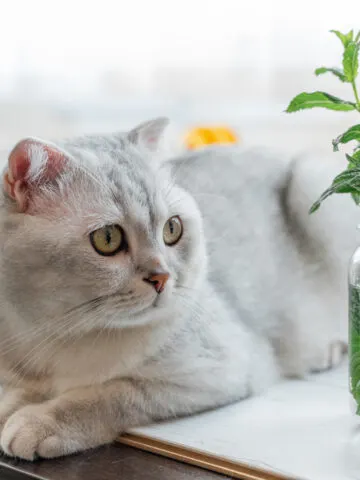

Leave a comment
You must be logged in to post a comment.